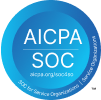If you’ve found this article, there’s a good chance that you’re looking to give your team (and maybe yourself!) a bit of a boost. Nothing unusual there — work is, well, work! For the amount of time we spend at work, adding a little encouragement and motivation along the way can make a huge difference in the quality of our experiences. But how? Let’s dive in!
What is an incentive?
Great incentives initiate and fuel desired behaviors and consolidate mindsets for a visualized outcome in almost any human interaction scenario. The best examples are customer incentives (applied to the marketplace) and incentivizing employees (driving work environment behavior). What do they have in common? “Reward expectation” – the power essential to spur someone to act in a certain way.
When incentives work as you expect them to, the resultant change in behavior should create benefits such as speeding things up, reducing errors, avoiding problems, building efficiency, diminishing cost, and bolstering revenue. The expectation momentum revolves around the probability of meeting the incentive challenge and the reward value for the action that created improvement. Why is this crucial? The greater the expectation, the more likely the visualized behavior will achieve better results. While there are many factors influencing motivation at work, incentives drive excitement!
It’s essential to understand that the incentive cycle is dynamic. So, suppose your employees see the realized reward—with a twenty-twenty look-back—as disappointing and, on second thoughts, not worth the effort. In that case, your next round of incentives may lose momentum as expectation credibility falters. As a result, it should make you aware and prepared for potential changes in employee behavior, ensuring that you can adapt and adjust your incentive programs accordingly.
What is an employee incentive program?
As described above, employee incentive programs that work ride on employee expectations around promised rewards for innovative thinking, hard work, creativity, and team contribution. Stakeholders design them to attract, engage, and retain unique talent, motivating positive behavior in a dedicated workforce. Incentive credibility emerges when the rewards align with the project demands, staff capabilities, human resources policy, and the company’s culture. Remember, rewards are an overhead one must weigh against the benefits employee incentive programs create – it’s a two-way street.
Benefits of employee incentive programs
How effective are employee incentives? Numerous studies have focused on answering this question.
One study by the Incentive Research Foundation found that incentive-centric companies experienced an average productivity increase of 22%. Companies leveraging incentives to recognize and reward employees’ accomplishments create around 89% employee engagement, 87% retention, and 85% loyalty compared to those that do not use incentives.
Notably, not everything in the incentive arena is about money. What else matters? Ego, self-esteem (i.e., how employees feel about themselves), belonging, and self-actualization are critical considerations. Conversely, employee incentive programs without monetary enticements in the mix will likely stutter and come to a screeching halt.
And yes, let’s acknowledge that self-motivation can help drive employee success, but building a more comprehensive employee incentive program recognizes that self-motivation can’t be taken for granted.
KPIs, feedback, and employee incentive programs
Clear targets and continuous feedback are indispensable ingredients of employee incentive programs that work.
Measuring performance is an indispensable ingredient, bringing Key Performance Indicators (KPIs) to the forefront of the conversation. For example, a revolutionary production process will inevitably rely on metrics such as unit volume, cost per unit, wastage, customer return, production per hour, machine downtime, employee cost per unit, and more.
Regular surveys are essential for knowing if one’s incentive programs are firing on all cylinders. Sogolytics’ expertise fits here like a hand in a glove, creating accurate digital short surveys and guaranteeing respondent anonymity to gauge your incentives with the right timing. Understanding the dynamics driving your program’s successes or failures is vital. Professionally structured surveys in the virtual space do the trick.
Different things incentivize employees, with the most common employee incentives including:
- Monetary devices: Bonuses, salary raises, tuition reimbursement, referral fees, stock options, free company swag, and valuable gifts
- Personal welfare: Health and wellness reimbursements and additional vacation days
- Recognition: Public announcements of accomplishments and VIP experiences
- Self-actualization: Professional development opportunities
- Cultural belonging: Shared team-building experiences
- Hybrid: The option to select a personalized reward
Two employee incentive program examples
Zappos uniquely flattens its employee hierarchy, allowing everyone to participate in awarding peers for contribution and work well done, with a hero of the month vote. Aside from incredible recognition benefits, it carries extra perks as an award.
Bain and Company (a reputable management consulting entity) has boldly made incentives the foundation of its culture. Its program involves a broad incentive range, from flexible working hours and hybrid situations to time off with pay for extraordinary results, expanding career horizons, and many bonus opportunities (i.e., when signing on recruits, performance-based, and others).
Five must-have employee incentive programs for small business (SMB) and enterprises
The takeaway from the above is that employee incentive programs’ ideas must cover monetary and non-monetary rewards to encourage employee behavior in the right direction, whether the culture revolves around in-office, remote, or hybrid workplaces. Here are the staple go-to options that the top incentive-centric companies always include in their programs.
1. Recognition and rewards programs
According to the Achievers Workforce Institute Culture Report of 2020, 35% of respondents emphatically stated they sought more recognition, and nearly double that underlined that retention of their services depended on recognition. Moreover, organizational cultures with recognition as a foundation experience three times less employee churn and 200% more likely to establish essential staff engagement.
It seems obvious that “recognition” should be a staple ingredient in every employee incentive program. Still, evidence surprisingly shows that only 20% of employers initiated one in the year preceding the survey.
Unsurprisingly, incentive frequency energizes recognition programs to deliver more impact. The Achiever report reflects that businesses following these guidelines are more likely to improve employee retention (by as much as 41%) and engagement (up to 34%). The Zappo example above—where the Company creates a platform for recognition from every angle at the click of a button (even from peers)—demonstrates this incentive category firing on all cylinders.
A fundamental question revolves around the balance between monetary and social recognition. There is a difference, although the two go hand in hand and can function simultaneously. Harvard Business School researcher Amy Whillans observes, “Cash matters in people’s lives, but it’s not all that matters.”
Social recognition may range from simply saying “thank you” to a formal team gratitude session with managers leading the charge. Indeed, a Harvard Business Review study showed that social recognition created happier workers alongside a 14% to 29% profit increase. In agreement, a McKinsey survey on the results of social recognition reflected that social recognition could improve employee engagement by 55%.
Points-based programs have the DNA to get the most out of monetary motivation, with employee recognition firmly in the mix at the same time. How? Employees can redeem points for rewards they truly covet, such as merchandise, digital or physical gift cards, VIP experiences, charity givebacks, and other innovative categories. The stakeholders must formalize the program with a comprehensive, meaningful, and enticing rewards catalog. Also, making the accumulation of points flexible with no severe time restrictions allows employees to customize their participation, embracing rewards that impact their lifestyle. Rewarding points claims almost instantaneously is another massive motivator that energizes the system.
Consider the price tag, of course, but attach it to:
- Your staff’s interest in electronics, fashion, hotel getaways, music, religion, charities, travel, fine dining, and sports events—the lifestyle spectrum is endless.
- Freedom of choice—a critical cultural signal that the company goes the extra mile to personalize employee recognition—indeed, far beyond the old-hat generic mug or T-shirt.
- Creating excitement as employees experience accumulated points aligned with job successes.
Realizing rewards after a point build-up has reminder power, where the employee inevitably recalls the milestones that yielded the gift. One study shows that 92% of employees say they’re more likely to repeat past behavior when the company recognizes it met standards of excellence. Thus, a points system encourages dynamic behavior patterns toward higher achievement, bolstered motivation, and improved ROI.
2. Referral programs
Here’s a surprising one. Did you know that most employers (82%) say employee referrals generate the best onboarding talent pool with a seismic impact on ROI? This ties into a key NPS survey question, “Would you recommend working at (Company Name)?” Referral employee programs take this a step further. How? By structuring a monetary reward for successful talent recruitment. In almost all cases, it emerges at a lower cost than paying professional headhunters while motivating current staff to be culture-conscious and make extra money at the same time.
One company I know consistently looks for onboard recruits and regards employee referrals as their most valued source. So, it installed a tiered points system awarding:
- One hundred points for a referral (paying $30).
- Two hundred points for reaching a second-stage interview ($60).
- Four hundred points for successful onboarding ($120)
Since its recruitment phases aim to hire dozens of candidates, employee dollar awards can be significant. Moreover, it draws employees into the process by integrating team orientation, cultural consciousness, and bolstered income in one neat package.
3. Professional development programs
What is professional development? Educating, training, and mentoring employees to advance within the organization. For a start, a lack of career development is a key driver of employee attrition, as identified by 40% of departing employees. According to a Gallup report, 87% of millennials would not consider a job opportunity where professional development programs looked weak. So, investing in your employees’ careers and providing in-house promotion opportunities (versus hiring outside talent) is a flashing recognition signal and a massive employee retention influencer.
Engaging employees in professional development gets traction when in-house learning and development resources are seamlessly available, like those delivered by Adobe (Learning@Adobe) and Salesforce (Trailhead) dedicated coaching programs, which include one-on-one personal mentoring. Although these initiatives require substantial planning and investments, they create an unforgettable employee recognition factor that consolidates retention.
4. Profit sharing programs and stock options
Initiatives in this arena are quantum moves to make employees stakeholders in the medium and long-term future of the business. The idea is to engage extraordinary talent with moves that carry equally heavy weighting of monetary and owner status recognition.
The good news about structuring profit share and stock option opportunities is it’s generally a variable cost decision, dependent on revenue increases (or cost reductions) that result in improved net bottom line numbers after paying the incentives.
In other words, the employee incentives align with a reasonable percentage of incremental net profit but significantly less than 100% of it. Still, if these recommended plans are too ambitious for you, introduce a program to match part or all of the employee’s 401k contributions (both of which tie to a percentage of the employee’s income)
5. Health and wellness programs
Obesity is a condition that manifests in frequent illness, lethargy, and sub-performance. So, too, does stress and mental ill-health (identified by premature burnout or erratic behavior, also performance detractors). These three health disruptors are the three most severe workforce and lifestyle threats. As a result, they impact employee continuity, motivation, and team member stability. So, these incentives encourage employees to lead healthier lifestyles, educate themselves on nutrition, and enter fitness regimens.
For example, according to a CNBC report, 59% of the workforce take significantly less time off than their job stress demands to stay productive, and 42% of remote workers fail to decompress effectively. So, consider providing free healthy lunches, on-site health screenings, gym facilities in-house, standing desks, informative podcasts, quit smoking challenges, and more with a centralized system awarding milestone successes.
Conclusion
To ensure success, your incentive program must cover all the bases. We’ve mentioned five vital ones, but there are several others—mainly offshoots of those covered above. For example, tuition reimbursement plans (a subsection of professional development incentives), bonuses and raises (monetary recognition options), and additional time off (a health and fitness incentive) are micro-options in the mix and viable considerations.
Where are you with incentive programs in your business? Whether you’re looking to drill down on one incentive channel or build a comprehensive strategy, you’ll be surprised at the difference with Sogolytics in your corner – so let’s connect!












